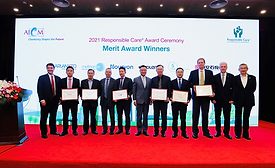Home » Keywords: » safety
Items Tagged with 'safety'
ARTICLES
Daylight Fluorescent Pigments
A Technology that Delivers a Luminously Enhanced Universe of Color to Products and Applications
Read More
Keep the info flowing with our eNewsletters!
Get the latest industry updates tailored your way.
JOIN TODAY!Copyright ©2025. All Rights Reserved BNP Media.
Design, CMS, Hosting & Web Development :: ePublishing










